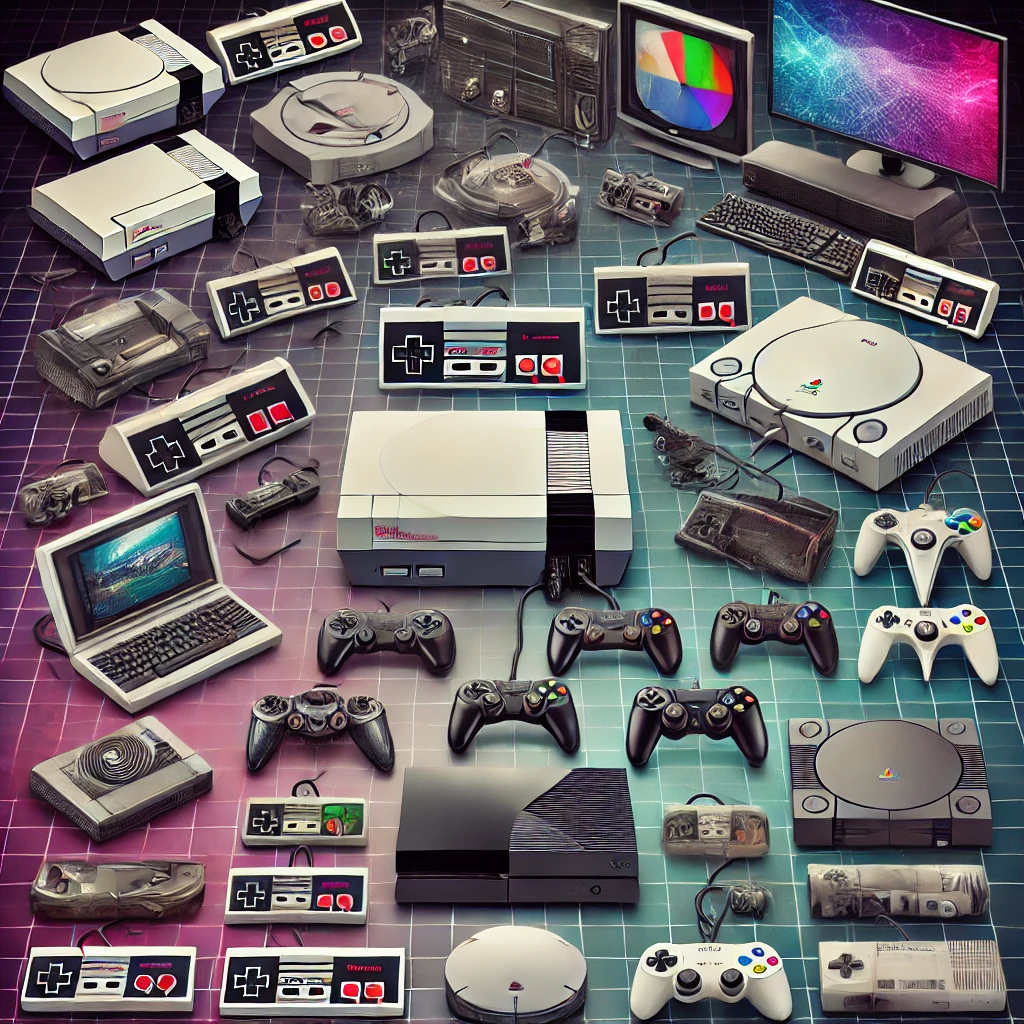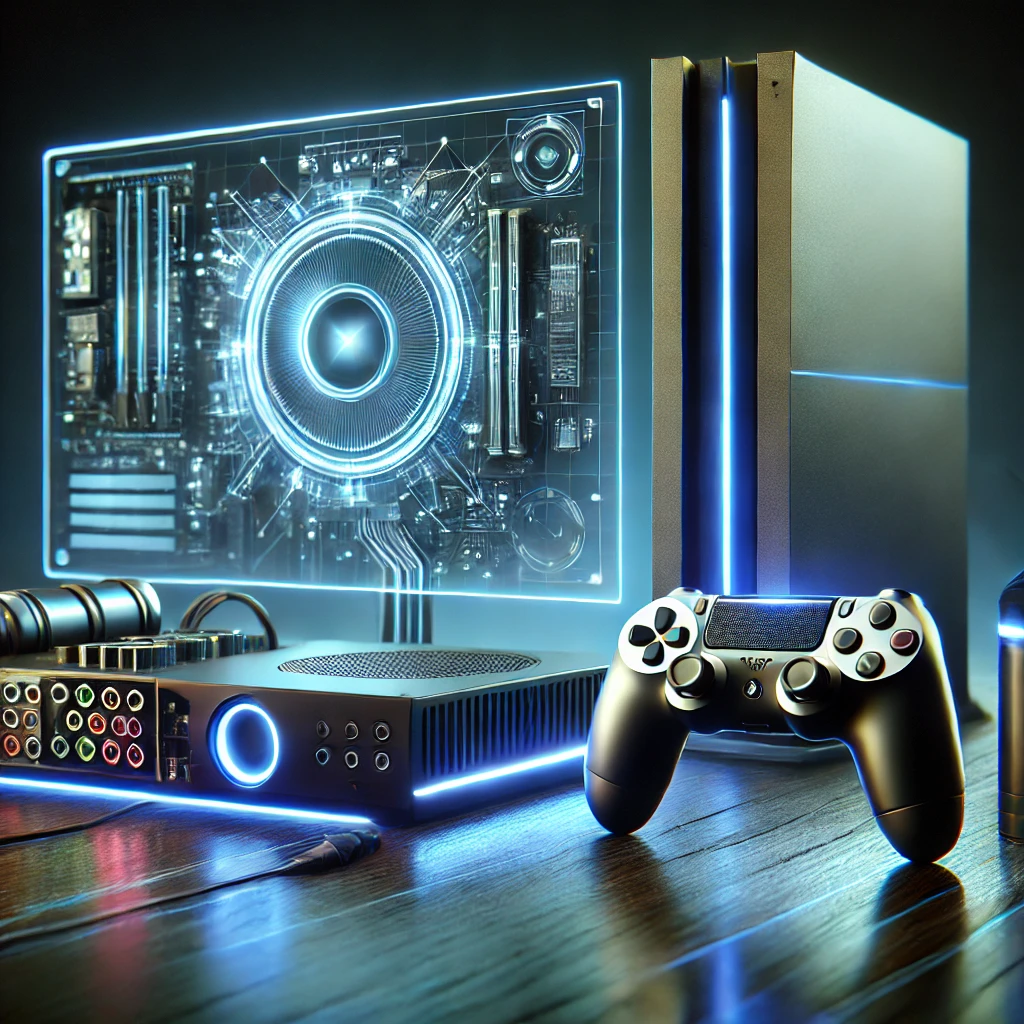
Gaming consoles and hardware have come a long way since their inception, evolving from simple pixelated screens to highly sophisticated systems that offer immersive experiences. Whether it’s a home console like the PlayStation 5 or the latest gaming PC builds, technology has dramatically transformed the gaming industry. In this article, we’ll explore the development of gaming consoles and hardware, the challenges the industry faces, and where the future of gaming may be headed.
The Beginnings of Gaming Consoles
The history of gaming consoles dates back to the 1970s when simple machines like the Magnavox Odyssey (released in 1972) paved the way for the modern consoles we use today. Early consoles provided players with rudimentary games like Pong, but it wasn’t long before consoles began offering more complex gameplay experiences.
In the 1980s, the rise of 8-bit systems like the Nintendo Entertainment System (NES) and Sega Master System revolutionized the way games were played. With the introduction of iconic games like Super Mario Bros. and Sonic the Hedgehog, gaming consoles became household staples. This marked the beginning of a competitive race between Sony, Microsoft, and Nintendo that continues today.
The Shift to 3D Graphics and High Definition
The 1990s were a transformative decade for gaming hardware. The introduction of 3D graphics in consoles like the Sony PlayStation (1994) and Nintendo 64 (1996) changed the gaming landscape. Gamers were no longer limited to two-dimensional worlds but could now explore 3D environments in titles like Final Fantasy VII and Super Mario 64.
As technology advanced, so did the graphical capabilities of gaming consoles. The PlayStation 2 (2000) introduced the ability to play DVDs, making it more than just a gaming console. It also featured better graphics than previous systems, allowing games to look even more realistic. Meanwhile, Microsoft’s Xbox (2001) introduced the concept of online multiplayer gaming with Xbox Live, setting a new standard for connected experiences.
By the mid-2000s, the gaming industry was ready for high-definition (HD) graphics. The PlayStation 3 (2006) and Xbox 360 (2005) ushered in HD gaming, allowing for more detailed textures and smoother gameplay. These systems also offered access to digital content such as movies and music, further blurring the lines between gaming and media consumption.
Gaming Hardware: PCs vs. Consoles
The debate between gaming PCs and consoles has been ongoing for years. On one hand, consoles are affordable, easy to set up, and offer a uniform experience. However, gaming PCs allow for customization and higher performance, enabling gamers to enjoy better graphics, smoother frame rates, and a broader selection of games. Gaming hardware on PCs, such as NVIDIA RTX graphics cards and AMD Ryzen processors, have pushed the boundaries of what’s possible in terms of resolution and frame rates, often reaching beyond 60 FPS in 4K resolution.
PC gaming enthusiasts swear by the ability to upgrade individual components, such as adding more RAM or swapping out GPUs for more powerful ones. However, this can also be a double-edged sword. The cost of building a powerful gaming PC can be prohibitively expensive, often surpassing the price of a console. Furthermore, while gaming PCs allow for high-end performance, they also require constant updates and maintenance.
On the other hand, gaming consoles like the PlayStation 5 and Xbox Series X offer convenience and out-of-the-box performance. Both consoles are equipped with solid-state drives (SSDs), which reduce load times and provide smoother gameplay. While gaming PCs are often seen as the pinnacle of performance, consoles remain popular due to their accessibility and ease of use.
Key Hardware Innovations in Modern Consoles
The PlayStation 5 and Xbox Series X are examples of how gaming consoles have evolved in terms of performance and innovation. These next-gen consoles bring some exciting hardware features that set them apart from their predecessors.
-
Solid-State Drives (SSD): One of the most significant upgrades in modern consoles is the shift from hard disk drives (HDDs) to solid-state drives (SSDs). This change has drastically reduced loading times, creating a smoother gaming experience. With the PlayStation 5’s custom SSD, players can jump into games almost instantly, a feature that’s transforming the way developers design their titles.
-
Ray Tracing Technology: Ray tracing is a graphics rendering technique that simulates how light behaves in the real world, offering more realistic lighting, reflections, and shadows in games. It’s a feature that was previously reserved for high-end gaming PCs but is now available on consoles like the Xbox Series X and PlayStation 5, bringing AAA titles to life like never before.
-
3D Audio: Both the PlayStation 5 and Xbox Series X offer improved audio technologies, with the PS5’s Tempest 3D AudioTech allowing players to experience sound from all directions. This adds a new layer of immersion, making the player feel as though they’re truly inside the game world.
-
Adaptive Triggers and Haptic Feedback: The PlayStation 5’s DualSense controller offers innovative features like adaptive triggers and haptic feedback. The adaptive triggers provide resistance to simulate different in-game actions, while haptic feedback offers vibrations that mimic real-world sensations, providing an enhanced sense of immersion.
Challenges in the Gaming Hardware Industry
While gaming hardware continues to evolve, the industry faces several challenges. Supply chain issues, such as the global chip shortage, have made it difficult for companies to meet demand for consoles and gaming PCs. Gamers have reported long waits and inflated prices due to these shortages. The semiconductor industry plays a pivotal role in the development of modern gaming hardware, and as global demand for chips increases, the gaming sector must adapt.
Backward compatibility is another ongoing issue. While consoles like the PlayStation 5 and Xbox Series X offer compatibility with many previous-generation games, the transition to new hardware often means sacrificing compatibility with older games. Many gamers are eager to see more seamless backward compatibility as the next generation of consoles advances.
The Future of Gaming Hardware
Looking ahead, gaming hardware will continue to push the envelope. The next generation of consoles may feature cloud gaming capabilities, allowing players to stream games directly to their devices without the need for expensive hardware. This could level the playing field, giving gamers access to high-quality games without the need for powerful consoles or PCs. Services like Google Stadia and Microsoft’s Xbox Cloud Gaming are already testing the waters for this new age of gaming.
The development of augmented reality (AR) and virtual reality (VR) technology also holds immense promise for gaming hardware. With companies like Oculus and Valve leading the charge in VR gaming, the future of immersive experiences is looking bright. As 5G networks become more widespread, cloud gaming and online multiplayer experiences will become faster and more reliable, offering a seamless connection for gamers around the world.
Conclusion
The gaming industry has come a long way since the early days of home consoles, and gaming hardware has evolved in ways that were once thought impossible. From the rise of 3D graphics to the inclusion of ray tracing, SSDs, and adaptive controllers, gaming consoles and PCs continue to push the boundaries of performance and innovation. As the industry looks to the future, technologies like cloud gaming, VR, and AR will likely revolutionize the way we play. With continued advancements, the next decade promises to be an exciting time for gaming enthusiasts.
For more insights on gaming hardware and upcoming tech trends, visit TechRadar and explore the latest developments in the gaming world.

